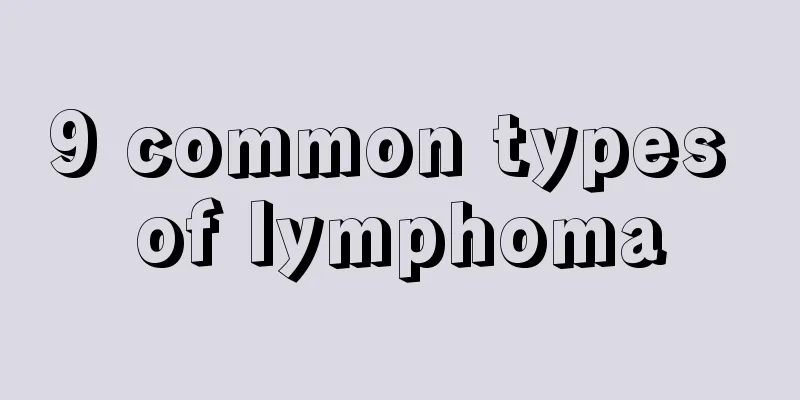9 common types of lymphoma

|
Lymphoma originates from lymph nodes and lymphatic tissues. Its occurrence is often related to the malignant transformation of certain immune cells produced by lymphocyte proliferation and differentiation during the immune response. It is more common in young and middle-aged people aged 20 to 40, and more common in men than in women. In recent years, its incidence has been increasing, which may be related to environmental deterioration, longer life expectancy and progress in histopathological diagnosis. There are 9 common subtypes of lymphoma in clinical practice: 1. Marginal zone lymphoma refers to lymphoma originating from B cells between marginal zone lymph follicles and follicular mantles. It can be divided into lymph node marginal zone B cell lymphoma, splenic marginal zone cell lymphoma and extranodal marginal zone B cell lymphoma of mucosa-associated lymphoid tissue. 2. Follicular lymphoma is a lymphoma that occurs in the germinal center. It is derived from B cells and responds well to chemotherapy, but it is prone to recurrence and becoming invasive. 3. Mantle cell lymphoma originates from B cells in the mantle of follicles. It is more common in elderly men, develops rapidly, has poor chemotherapy response, and the average survival time is 2 to 3 years. 4. Diffuse large B-cell lymphoma is the most common type, which is difficult to treat and has a 5-year survival rate of only 25%. 5. Burkitt's lymphoma is highly malignant and invasive, often occurring in children, and is characterized by involvement of the jaw. 6. Angioimmunoblastic T-cell lymphoma is a type of aggressive T-cell lymphoma and is often treated with chemotherapy containing doxorubicin. 7. Anaplastic large cell lymphoma originates from T cells and progresses rapidly, often accompanied by skin invasion, with or without lesions in lymph nodes and other extranodal sites. 8. Peripheral T-cell lymphoma is an aggressive T-cell lymphoma that often affects the skin, lungs, and central nervous system. Most patients have immune deficiencies, and chemotherapy is ineffective, with a poor prognosis and a survival period of less than one year. 9. Mycosis fungoides is an indolent lymphoma, and the proliferating cells are mature helper T cells. |
<<: Typical manifestations of Hodgkin's lymphoma
>>: 5 methods for clinical diagnosis of lymphoma
Recommend
What is the best method for treating liver cancer? Revealing the treatment principles of liver cancer at different stages
What is the best treatment for liver tumors? With...
What should I do if I have a pimple on the inner thigh
If you have acne on the inner thigh, avoid scratc...
How to reduce inflammation on your face at home
We all know that sometimes our face will feel a l...
How to eat mustard without choking
Mustard is something that people both love and ha...
Will brain cancer cause inability to walk?
Can brain cancer cause an inability to walk? 1. I...
What are the benefits of drinking wolfberry soaked in water
As we all know, wolfberry has the effects of impr...
What are the dangers of cervical cancer
What harm does cervical cancer do to women? Many ...
What are the symptoms of lymphoma and how should it be treated
What are the symptoms of lymphoma and how is it t...
What is the treatment for severe fatty liver
Friends always fail to take responsibility for th...
How long does it take to recover after wisdom tooth extraction
It is well known that people aged 18-25 generally...
How can I refresh myself
Nowadays, people are under great pressure in life...
What should I do if I have phlegm in my throat from smoking
Many men have the habit of smoking. Smoking can r...
What are the common causes of lung cancer
Many reasons can lead to lung cancer, which is qu...
What causes facial paralysis?
We cannot ignore the problem of facial paralysis,...
The efficacy and function of black agate
Black agate is a common type of agate in normal t...









